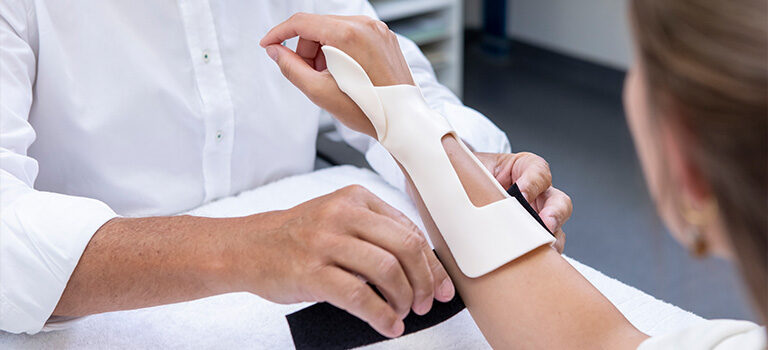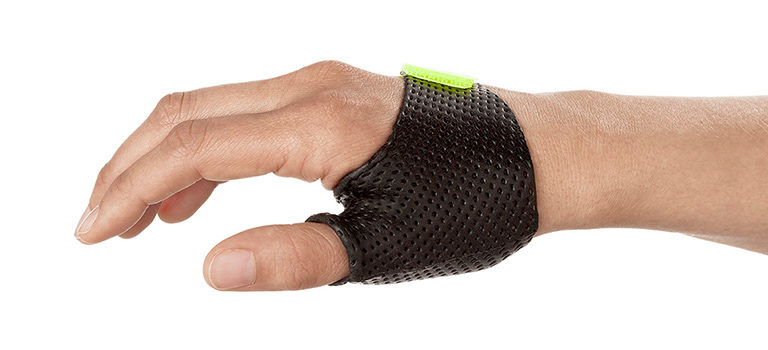
Common Sports Injuries and Orthotic Solutions (+ Free Ebooklet)
Splinting sports-related wrist, hand, thumb and finger injuries
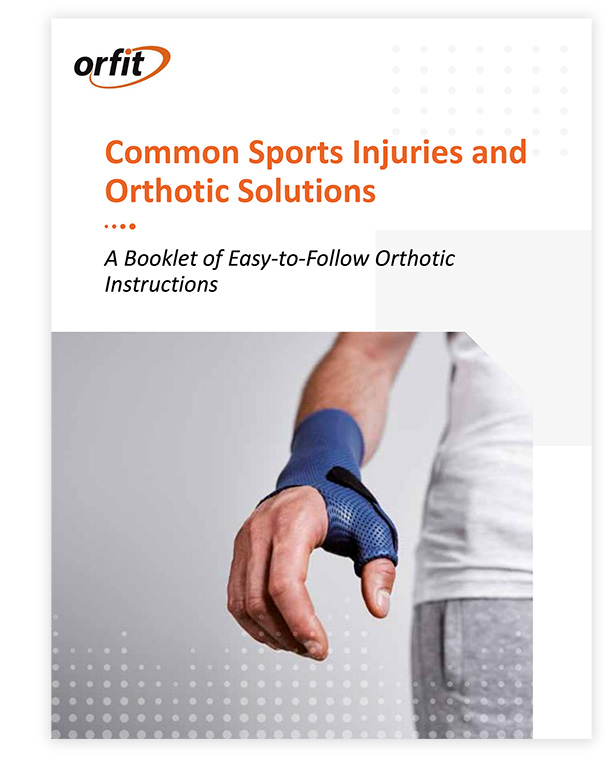
Download now: Sports Injuries Booklet
Sports injuries can occur in any type of athlete: the professional, the weekend warrior, the high school sports buff, or the enthusiast who occasionally takes up a sports activity.
But no matter the type of athlete you’re treating, there are a few things to keep in mind when it comes to orthotic fabrication for sports injuries. In general, therapists treating active individuals need to understand the time frames of healing for each anatomical structure, the appropriate orthotic intervention, and the need to develop a treatment plan for the individual.
In order to help each patient return to full participation, you will also need to take into account:
- Strengthening and sports-specific exercises
- Conditioning activities
- Training schedules
Let’s discuss some of the most common injuries of the hand and fingers associated with sports activities and suitable orthotic solutions.
Injuries to the fingers
Mallet injuries, boutonniere injuries, fractures and dislocations are all common finger injuries related to sports. Overall, it is critical to determine the exact structures affected and offer a protective orthosis in the correct position for healing.
Orficast is an excellent solution for most finger injuries. All you need is about 8-10 inches! Buddy tapes out of our Orficast material are also helpful and easy to fabricate.
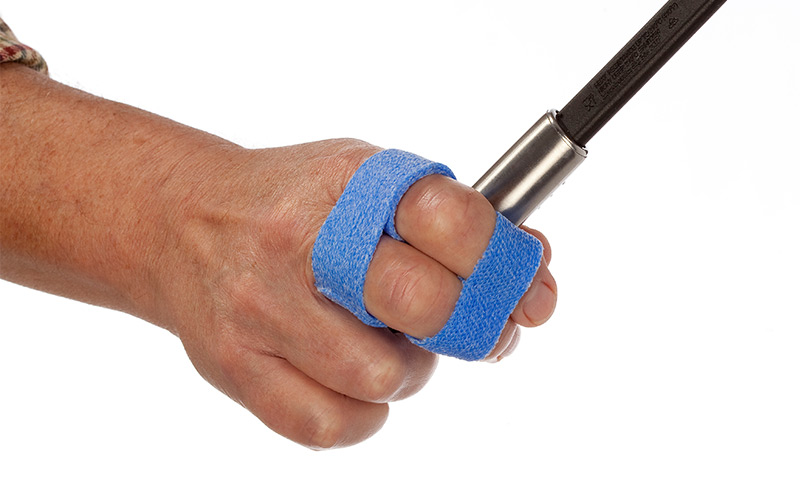
Buddy tapes in Orficast Blue.
Of course, there are many more orthotic solutions for finger injuries. Learn all about them in our Booklet on Common Sports Injuries and Orthotic Solutions (free download).
Injuries to the wrist
Wrist injuries can include fractures, sprains and tendonitis. These generally require immobilization in a wrist orthosis for healing of injured anatomical structures.
There are many methods and designs for the fabrication of a wrist orthosis, and correspondingly, many different materials will work:
- Elastic materials in 3.2 mm (1/8”) thickness are great for either dorsal or volar-based wrist orthoses. You can use either of these Orfit Materials: Orfit Classic, Orfit NS, and Aquafit NS.
- Thinner materials in 2.0 mm (1/12”) thickness are excellent for circumferential orthoses. Try any of these Orfit Materials: Orfit Classic, Orfit NS, Aquafit NS, and Orfit Colors NS.
A circumferential orthosis might feel most secure and protective to an athlete that wants to get back onto the field quickly (with the physician’s approval of course).
.
Injuries to the thumb
In the thumb, we commonly see fractures and collateral ligament injuries when it comes to sports activities. An ulnar collateral ligament sprain generally affects the ulnar side of the thumb MCP joint and can cause the finger to become unstable.
A short thumb opponens orthosis, in particular, can help to stabilize the thumb and allow for healing.
Suitable materials for quick and easy splinting include:
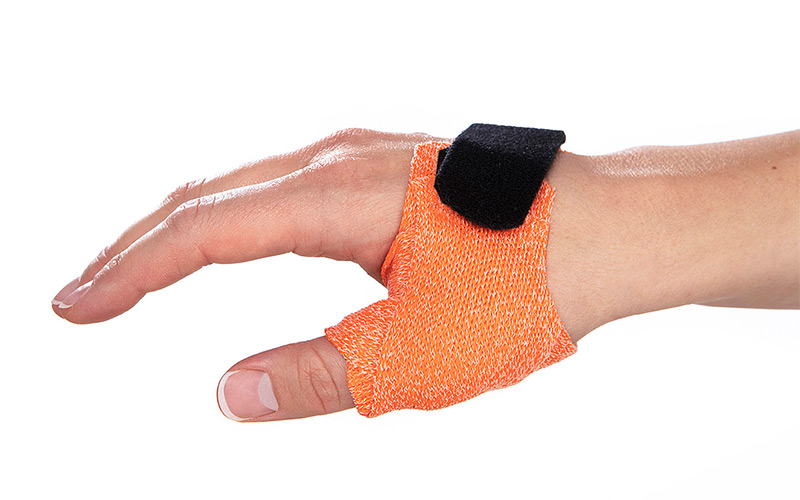
Thumb orthosis in Orficast Orange.
Discover other orthotic solutions and how to fabricate them in our Free Booklet on Splinting for Sports Injuries.
Injuries to the wrist and thumb
Fractures and tendinitis are common sports-related injuries to the wrist and thumb. In general, De Quervain’s and Intersection tendinitis can both be treated with a long opponens orthosis.
Try the following materials for the long opponens:
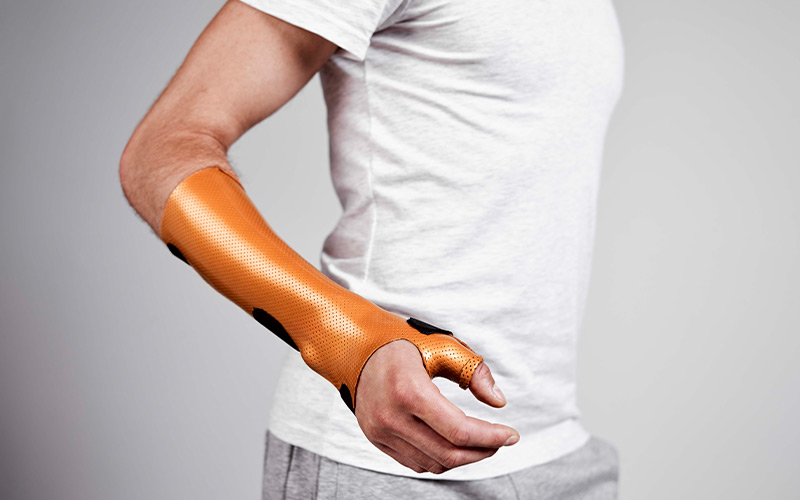
Long Opponens Orthosis in Orfit Colors NS.
Injuries to the hand
The metacarpal bones can be fractured during athletic activities, especially when playing with hard balls. Ulnar and/or radial gutter orthoses can protect the fractured bones during healing.
An easy-to-use and effective material for this type of orthosis is Orficast More.
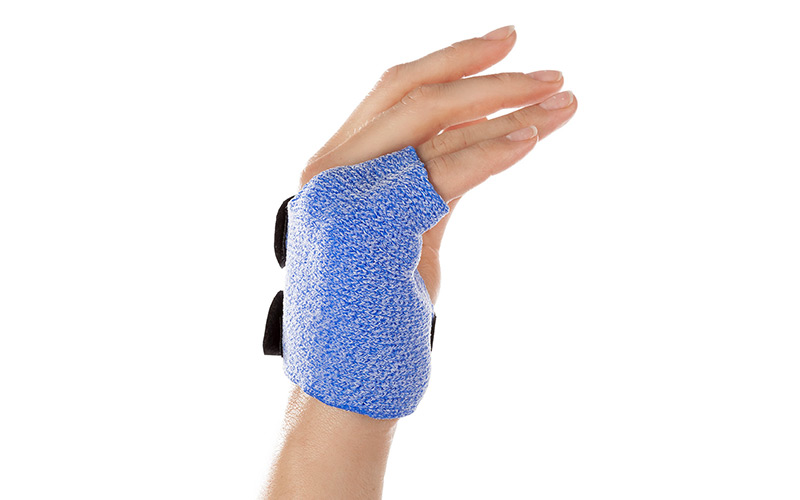
Ulnar Gutter Orthosis in Orficast More Blue.
Splinting Sports Injuries Ebooklet (Free Download)
Want to dive a little deeper into the world of Splinting for Sports Injuries? Then download our Common Sports Injuries and Orthotic Solutions Ebooklet with easy-to-follow instructions and photos.
This Ebooklet features:
- Detailed orthotic fabrication tutorials for a variety of orthoses.
- Material choices for maximum efficiency.
- Tips for fast and easy splinting.
But there’s more! Check out our Sports Injuries Course at The Orfit Academy for many more tips and video-based tutorials. You can register for free to watch this course as well as any of our other courses online.
References
Avery, D. M., Rodner, C. M., & Edgar, C. (2016). Sports-related wrist and hand injuries: a review. Journal of orthopaedic surgery and research, 11(1), 1-15.
Chen, N. C., Jupiter, J. B., & Jebson, P. J. (2009). Sports-related wrist injuries in adults. Sports health, 1(6), 469-477.
Peterson, J. J., & Bancroft, L. W. (2006). Injuries of the fingers and thumb in the athlete. Clinics in sports medicine, 25(3), 527-542.
![]()

Written by Debby Schwartz, OTD, OTR/L, CHT
Physical Rehabilitation Product and Educational Specialist at Orfit Industries America.
Debby is a certified hand therapist with over 36 years of clinical experience. She completed her Doctorate of Occupational Therapy at Rocky Mountain University of Health Professions in 2010. She has worked at Orfit Industries America as Product and Educational Specialist since 2007.
Debby is also an adjunct professor at the Occupational Therapy Department of Touro University, School of Health Sciences, and at the Occupational Therapy Department at Yeshiva University, Katz School of Science and Health in NYC. She has written many book chapters in the field of hand therapy and multiple articles for hand therapy journals, including the ASHT Times and the Journal of Hand Therapy. She has published a new textbook on orthotic fabrication together with Dr. Katherine Schofield, entitled “Orthotic Design and Fabrication for the Upper Extremity: A Practical Guide”.
![]()

